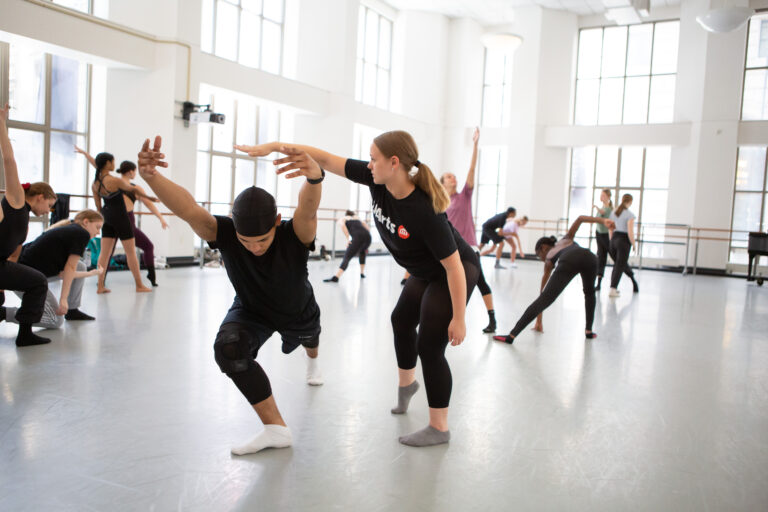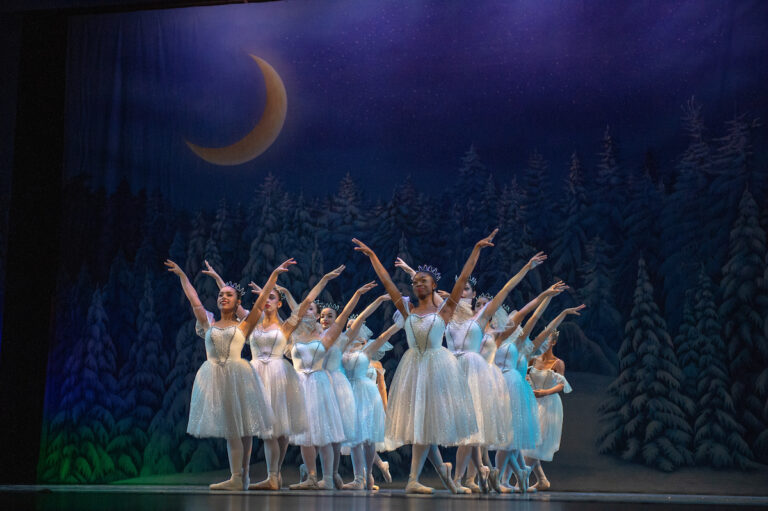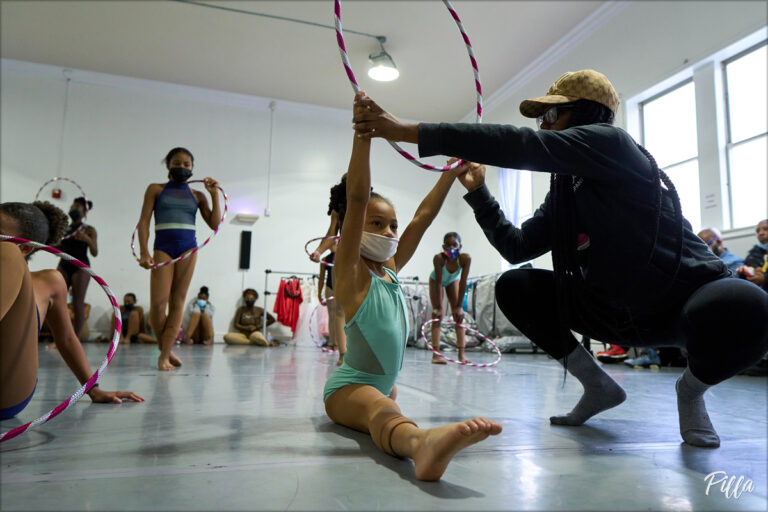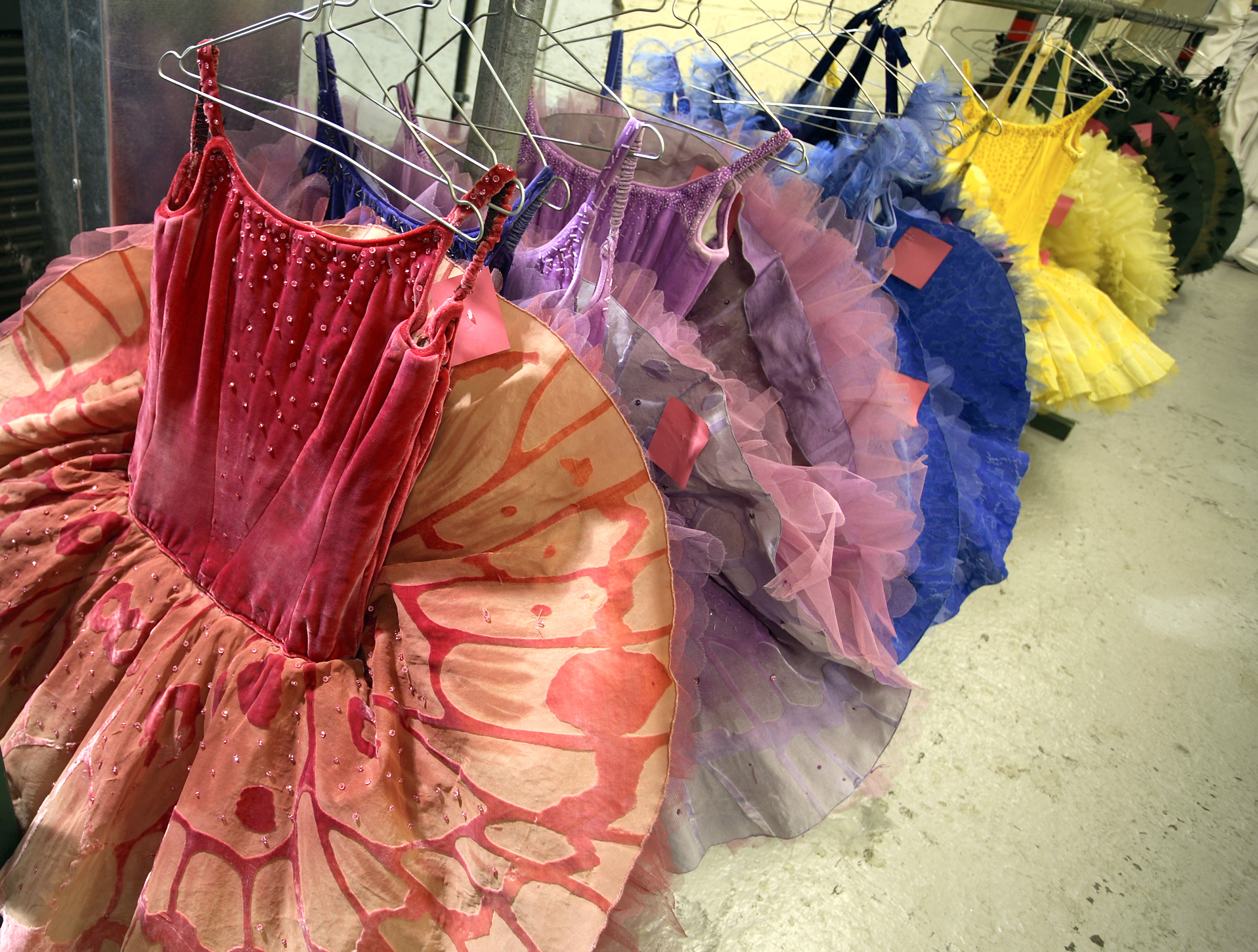
Parents who are new to the dance world—or those who have recently changed to a new studio—often get sticker shock when it comes to costumes. Teachers and administrators frequently field the same questions: “You mean tuition doesn’t cover costumes?” “Another fee so my kid can dance in a show?” “Each dance needs a different look?”
Determining whether to charge a performance fee, to reuse costumes from storage, or to purchase new costumes each season from a retail outlet depends a lot on your student population and your studio’s goals. DanceTeacher+ talked to three studio owners to see how they approach costumes, pricing, and policies.
The School at Open Space in Portland, OR
Year it opened: 2021
Number of students: 165
Focus: Contemporary dance and ballet
Maeve Dougal, The School at Open Space co-founder and director of education, says the studio’s costume policies are just beginning to take form. “We haven’t figured it all out yet,” she says, adding that the school’s first performances were outdoor showcases with minimal costuming thanks to the COVID-19 pandemic.
Currently, there is a performance fee each semester of $50 for Little Artists (ages 3 to 12) and $100 for Young Artists (ages 12 to 20). “We didn’t want to call it a costume fee because we don’t want the families to think that they are buying and keeping their costume,” Dougal says. “However, we did get some feedback that we weren’t explicit enough about costume ownership, so now we specify that the fee covers theater rental, tech crew, staffing, and minimal costume enhancements. We make it clear that Open Space owns the costumes and they are to be returned at the end of the show.”
The goal is to have an on-site costume room. Right now, there’s an off-site storage unit with racks of tutus and labeled clear bins. The current semesterly fee structure is not enough to adequately cover costuming costs, says Dougal. For example, the bodices she recently purchased went over the fee by $50 per dancer, which means she had to pull from tuition income to make up the difference. “We’re kind of eating the costs right now, but we want to slowly ramp up the fee each year so we don’t shock our families,” she says, adding that she’s confident they’ll be able to reuse the bodices for future performances.
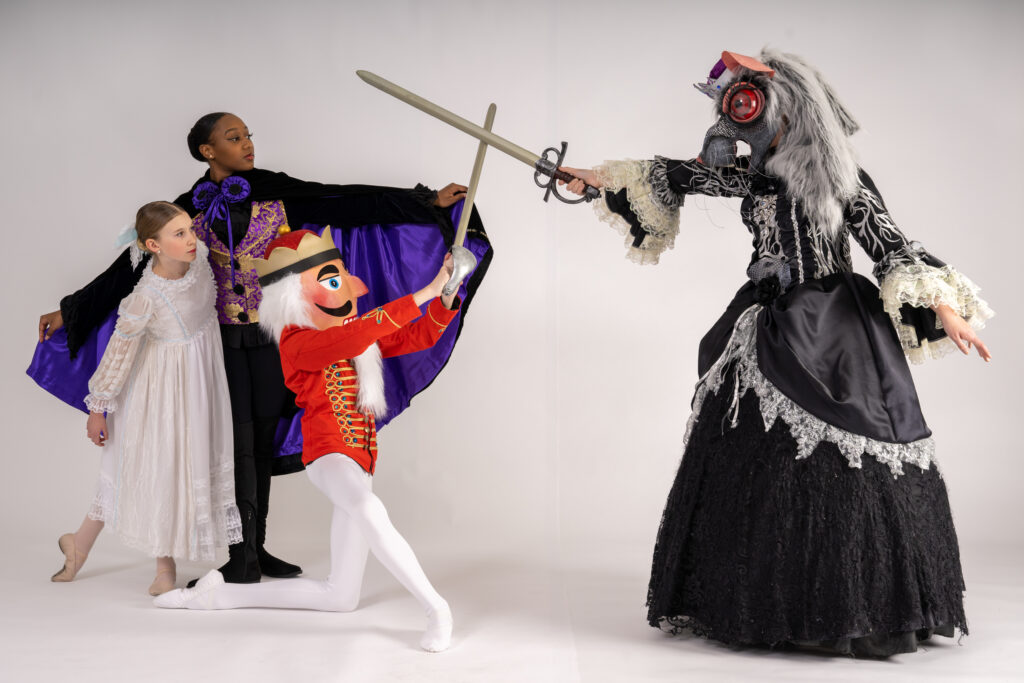
Norwalk Metropolitan Youth Ballet in Norwalk, CT
Year it opened: 2013
Number of students: 120
Focus: Classical ballet, with jazz and contemporary
Norwalk Metropolitan Youth Ballet co-owners and husbands Adam Holms and Max Riesen have found most families appreciate knowing their children will have access to a professional-level costume wardrobe, especially as they grow with the studio. Riesen enrolls each new and returning student in person, so he tells them face-to-face about the mandatory $350 nonrefundable costume rental fee. “It’s just part of the registration process, and it all goes into a separate costume fund so we can source and order costumes,” he says. “It’s required for every student, whether it’s a primary student taking a 45-minute class once a week or an advanced student who takes seven classes a week.”
Holms, who is the school’s artistic director, utilizes high-end manufacturers and artisans, and only buys pieces that can be repurposed for another production. “A lot of parents are thankful for the way that we do it because they were previously spending $175 per class or dance,” he says. “Having a top-quality costume program really helps if you’re trying to get people to invest in you and your program.”

Heartbeat Performing Arts Center in Apple Valley, MN
Year it opened: 1998
Number of students: 500
Focus: Dance, acting, singing
When students enroll each fall, Heartbeat Performing Arts Center owner Deb Lysholm lets parents know up front that besides tuition, the only other costs they can expect are tickets and costumes, which the dancers then keep. “I tell them I look for the best quality and the best price,” she says, “and I make sure the selections are age-appropriate, lovely, and comfortable to move in.”
For elementary-school students who take multiple classes, each costume costs $70. For middle- and high-school students and adults, it costs $80 to $90 per costume. “They pay us and we pay the costume house,” Lysholm says. “When you have the cost fall on the students, it’s better to tell them how much it will be and a payment due date.”
Measurements are taken in December for the annual June performance. Once the costumes arrive, Lysholm and her colleague and daughter Kristin Freya sort them out by style and size. “It looks like a department store has exploded in the studio when we do this,” Lysholm says. “We then always give them to the students in a nice gift bag, like they’ve shopped for something special. It’s a lot of work, start to finish, and I think the parents see it and their mindset isn’t on the cost but rather that they’re so glad they’re not having to do it themselves.”

